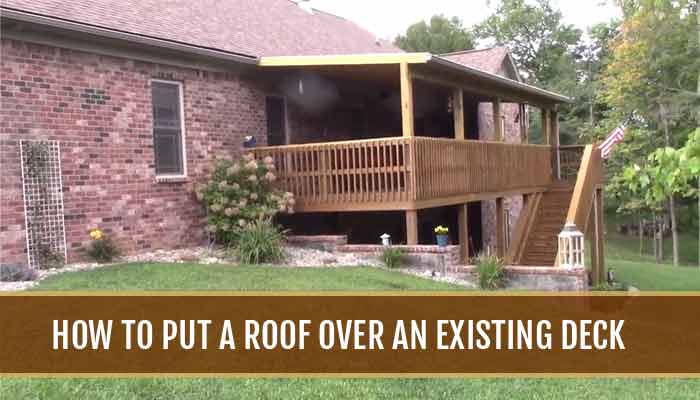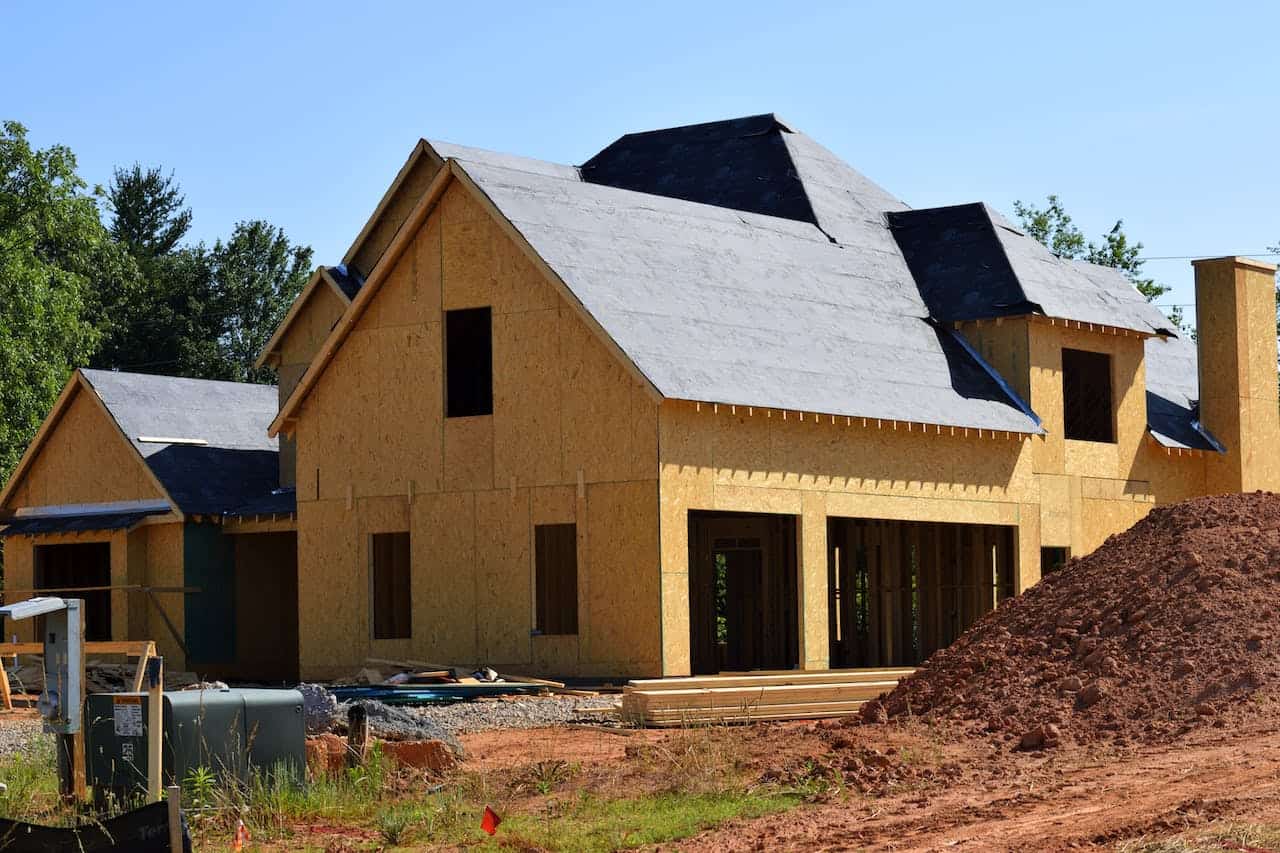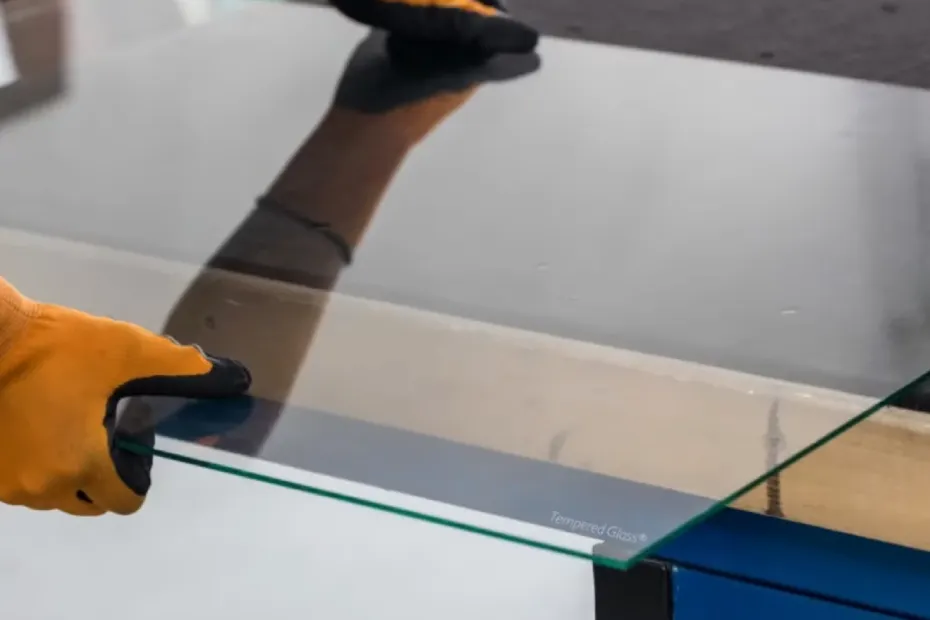WoodenuKnow.com is a participant in the Amazon Services LLC Associates Program, an affiliate advertising program designed to provide a means for sites to earn advertising fees by advertising and linking to Amazon.com and may earn from qualifying purchases.
The average homeowner spends $5,000 on a new deck. If it’s built right the first time, that money should last for many years. But what if your old deck is starting to show its age? Or you’re building an addition and need a roof over a deck?
Most homeowners think that if they already have a deck, then putting a roof over a existing deck is as easy as buying or building a new roof and covering the top of the deck with it. The truth is that many different elements need to be considered when deciding whether or not this project will work for you.
Here are some things you’ll want to consider before proceeding with building a roof over a deck.
What kind of Roof is Best for My Deck?
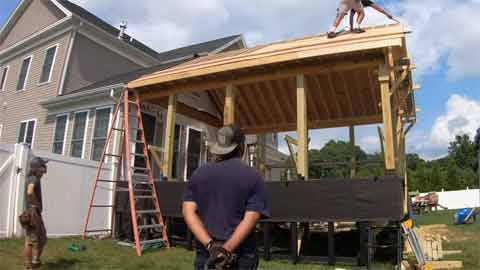
Many different types of roofs could work for you, depending on your deck and the budget. However, shakes, metal roof, and shingles are usually the more popular choices for a residential roof.
All of these options will provide excellent protection from the harsh winters, as they can withstand much higher amounts of snow load than most other types.
Metal roofs also come with a lifetime warranty. This warranty is extremely common for roof options, and keeps in mind when looking at what type of roof would be best for you.
Brick facades and similar roof could also be a great idea. However, these are usually more common for commercial buildings. Brick facades look the very traditional and old world in nature, but they can also provide you with some security benefits.
This type of roof is usually made out of brick or concrete over a metal framework and add an extra layer of protection from intruders.
Again, these types of roofs are generally much more common in commercial buildings due to the added security, but they could work well for your deck if that is something you are looking for.
How to Put a Roof Over an Existing Deck?
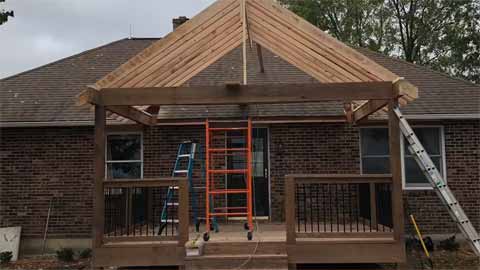
Determine the suitability of the deck for a roof: Before starting any work, ensure that the roof supports the weight of the new roof and any snow load in winter.
Step 1: Measure the Deck for Roofing Works
The first thing you will need to do is measure the deck, understanding that the measurements will depend on its shape and length. For example, measurements for a rectangular or square deck are always easy as you just need to measure the height and width.
Shapes like trapezoids and pentagons are more complex because they lack an apparent width or height measurement. Take any size and multiply it by 3 (for example, if a pentagon has sides 2x3ft, its base is 6ft x 6ft).
Alternatively, you could divide the deck into sections, measure the area of one section, and multiply this by however many sections there are. Then, as soon as you have all your measurements, you can draw them on paper and use them as guides for cutting out your roof boards.
Never forget to use multipurpose woodworking benches while cutting boards. It will help you to avoid unwanted back pain.
Step 2: Inspect the Framing
Ensure that there are no signs of decay or rot that is likely to compromise structural integrity. If there are such signs, you may need to replace some framing members before installing your roofing materials.
Step 3: Install Rafters:
Decide on the type of rafter details and install according to manufacturer specifications, ensuring they are spaced correctly for a proper level line and a good overhang at each end of the building frame.
Step 4: Prepare Decking Boards
Lengths will need to be determined according to rafter spacing and cut to fit between the rafters for a level line.
Step 5: Install the Decking Boards
Use suitable screws/nails or adhesive to secure each board in place with minimal gaps between them, ensuring they are properly aligned for best results.
Step 6: Complete the Framing of Roof Eaves:
Add any finishing touches like fascia trim at this time before moving on to finishing work such as roof shingles or deck tiles.
Step 7: Install Roofing Materials:
Finish the Job:
You might want to trim nails, paint, and touch up with caulk to seal everything up for a professional finish.
Optional:
You may also want to add gutters, downspouts, ventilation fans, or other features of your choosing at this point as well if finishing work is complete on the outside structure already.
You Might be Interested: Complete Guide to Bracing a Deck from Swaying
Why Should you Put a Roof Over an Existing Deck?
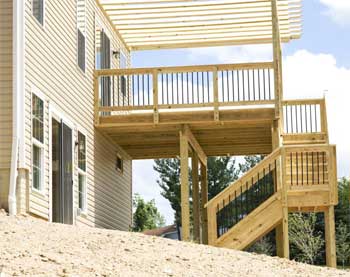
Roofing a deck is an excellent way to protect the deck from exposure and damage that might cause it. Exposure to the sun can cause it to dry out and rot, leading to expensive repairs in the future. Also, if you are putting a roof over an old deck that was not designed for snow load, you will want to ensure that it is safe for the new one.
Putting a roof over a current deck can be advantageous because it protects the deck from the elements. This outdoor living space is often used year-round; with summer BBQs and winter holiday parties, the deck roof must stay in good condition for all seasons. The suitable roofing material will help maintain the life of the deck as much as possible.
A roof over a deck is also a good investment in energy efficiency and comfort. When you install insulation on your deck roof, it’s going to help keep your home naturally cool during these hot summer months while also keeping your home warm in winter.
Materials Needed for Roofing Work
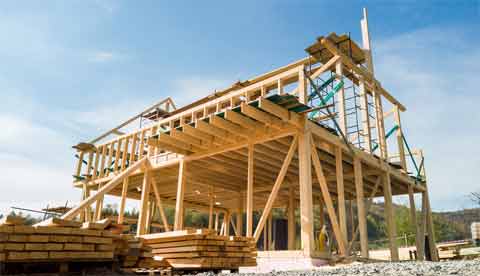
Materials needed for adding a roof over your present deck will depend on the size of your deck and also on if you have enough headroom under the deck roof. For smaller decks, roof can be laid out like shingles would go on a house.
Larger once will require more support beams and braces. The tools you’ll need for adding a roof will vary depending on the materials used for installation. Still, shingles are usually nailed with a rubber mallet/hammer combo, while lightweight materials can be screwed in with a power drill.
If you plan to build a roof over the original decking or boards, you’ll need to get new roofing material (shingles or other material) and ladders or scaffolding if the height requires it.
If you plan to remove the old decking and replace it with a new or stronger one, check with local building codes before you cause any damage to your existing structure
Your town might require an inspection by a certified professional if you are using the roof over your deck for access to a second floor of the home.
Once inspected and approved, you can remove all old materials and replace them with a new deck. After that, you can build a roof over your deck. You will also need to check that the nails are fully extracted and dispose of them properly (they’re likely not approved for disposal in a landfill).
Types of The Roof to Put Over an Existing Deck
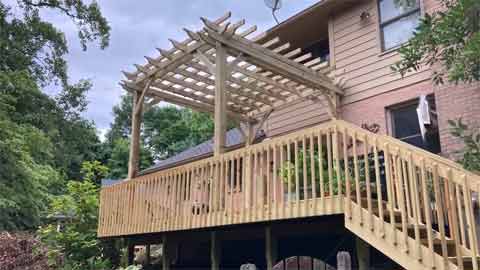
There are many different types from where you can consider before adding these over your current deck. However, some common types of deck roof include the following:
Shed Roof:
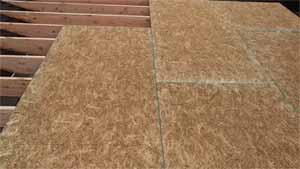
A shed roof is usually a much more cost-effective solution for homeowners who need shelter from the elements but don’t want to invest in something as permanent as framing and siding.
Shed types also come in such styles and shapes as gable, gambrel, hip, and hipped so you can be sure to find one that will look good on your property while providing you with everything you’ll need to keep out of the elements.
Wood Shingles:
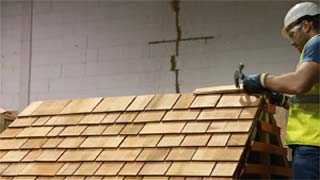
This type is common in older homes and in historic homes. The main drawback is that they are not very tough, so they break off easily and need to be repaired regularly. They also tend to be more expensive than other materials.
Rolled Metal Roofing:
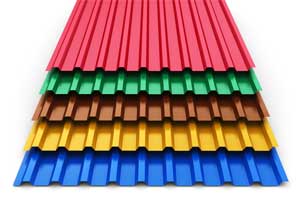
These roofs tend to be easy to install with a standard cost per square foot for installation. The only issue might be how heavy it is, making it difficult to walk around on.
Standing Seam Metal Roof:
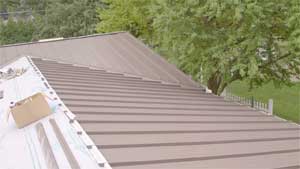
Standing seam metal roof are known for their affordability and durability. Some brands are more expensive but will provide better longevity and more energy efficiency.
Asphalt Shingle Roof:
Those who have this kind over your deck usually have asphalt shingles on their homes as well, so it’s an excellent transition to combine the two for matching looks. But, again, these types tend to be the cheapest and are often used with other materials for the best results.
Tile Roof:
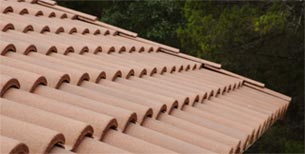
Tiles add a unique look to homes and decks. These are designed to be waterproof, eco-friendly, and very durable as they can last up to 50 years. The main disadvantage of building this kind over your deck is that tile are costly, sometimes costing over $20,000.
Slate Roof:
These are very durable and long-lasting. Some can even last up to 100 years. They require minimal maintenance over the years but before you start to build a roof, be warned that slate are also quite expensive, sometimes costing between $10,000-$15,000.
Conclusion
Putting a roof over your current deck can be an excellent way to protect it from the elements and extend its lifespan. To ensure you get the best possible results, consider all of the factors that will affect your project, such as how much space is available for storage or any safety concerns before starting work. And remember, a new roof will require regular maintenance. Now that the deck has become an extension of your living space, you can decorate it with accessories to match your home’s decor and use it for entertaining.
Some Related articles:

